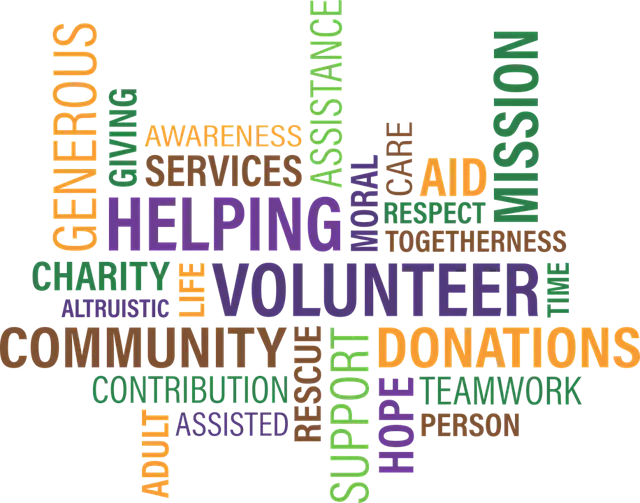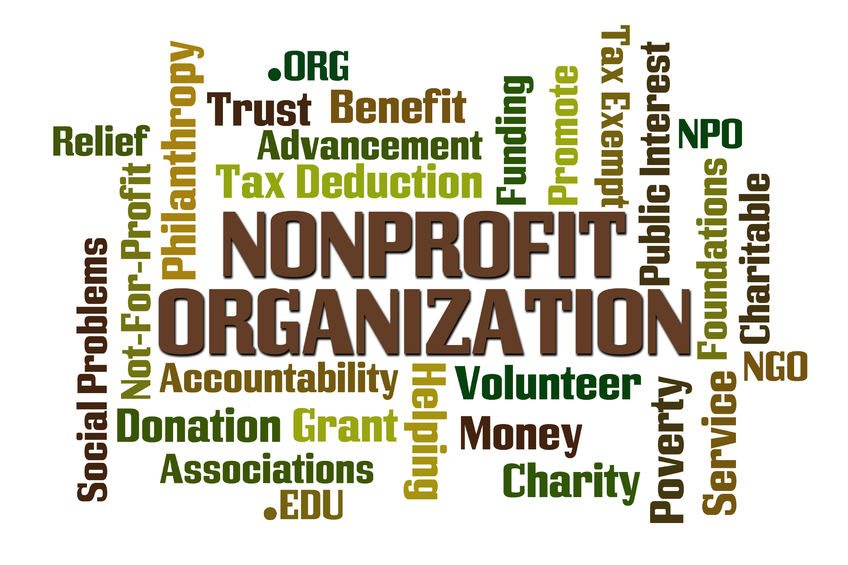Nonprofit Firm: Specialist Assistance for Your Mission and Area Influence
Nonprofit Firm: Specialist Assistance for Your Mission and Area Influence
Blog Article
Assessing the Challenges and Opportunities Encountered by a Nonprofit Firm in Achieving Its Mission and Goals in Today's Society
In the existing landscape, not-for-profit firms are browsing an intricate range of obstacles, such as fluctuating financing resources and increased competition for donor engagement. These troubles, while daunting, can additionally open opportunities for technology and partnership that might improve their capacity to satisfy missions. By analyzing how nonprofits can strategically adapt to these characteristics, we can uncover not only the methods they use to overcome obstacles but also the untapped possibility that exists within their operational structures. What continues to be to be seen is exactly how these organizations will harness these possibilities to redefine their impact in culture.
Present Landscape for Nonprofits
The present landscape for nonprofits is defined by a complex interaction of advancing funding versions, heightened competition for donor focus, and enhancing needs for liability and openness. Nonprofit organizations are progressively expanding their profits streams to include gives, private donations, corporate sponsorships, and social enterprise campaigns. This shift shows a critical response to standard funding resources becoming more competitive and uncertain.
Furthermore, the rise of data platforms has transformed just how nonprofits engage with possible donors. Social media site, crowdfunding, and on-line projects are currently vital tools for getting to broader audiences, yet they likewise heighten competitors among organizations competing for restricted resources. In this environment, nonprofits should improve their messaging to properly record the interest and commitment of fans.
Additionally, stakeholders are requiring greater transparency concerning just how funds are alloted and the measurable effect of not-for-profit tasks. This trend demands that companies embrace durable liability actions, consisting of thorough reporting and analysis frameworks, to show their efficiency. Consequently, the not-for-profit industry is navigating a landscape that calls for ingenious thinking, critical flexibility, and a commitment to moral techniques in order to thrive amidst these vibrant obstacles and possibilities.
Key Difficulties Encountered
Navigating the nonprofit field offers a myriad of obstacles that can impede business efficiency and sustainability. Among the most pressing issues is the reliance on irregular funding sources. Nonprofits frequently depend on gives, contributions, and federal government assistance, which can change substantially, leading to economic instability and difficulties in lasting planning.

Team retention and volunteer interaction pose more obstacles, as numerous nonprofits struggle to use competitive wages and benefits. The high turnover rates can disrupt business connection and affect solution delivery.
In addition, adjusting to technical innovations and electronic transformation continues to be an obstacle for many nonprofits. An absence of sources and know-how can avoid companies from leveraging modern technology efficiently, consequently limiting their outreach and performance.
Inevitably, these challenges need nonprofits to use tactical planning and ingenious methods to keep their mission and make certain sustainability in a complex landscape. nonprofit agency.
Arising Opportunities
Exactly how can nonprofits harness emerging chances to improve their effect? In today's swiftly advancing landscape, nonprofits have the chance to take advantage of technological improvements, shifting social dynamics, and increased public recognition to further their goals. The rise of digital platforms enables companies to broaden their reach, involving with diverse target markets and cultivating community links. By using social media sites and online fundraising devices, nonprofits can enhance presence and attract more youthful donors who are much more likely to support reasons they resonate with.
In addition, collaboration with organizations and other sectors is coming to be a lot more widespread, offering nonprofits with access to sources, experience, and ingenious services. Collaborations can enhance efforts, drive neighborhood involvement, and develop lasting influences. Furthermore, the growing focus on business social duty offers nonprofits opportunities to align with companies that focus on social impact, gaining financial backing and shared goals.
The enhancing emphasis on data-driven decision-making makes it possible get more for nonprofits to much better examine their programs and end results, improving accountability and performance. By welcoming these emerging opportunities, nonprofits can not just fortify their functional capacities but likewise expand their influence in addressing pressing societal problems, ultimately driving purposeful adjustment in their areas.
Strategies for Adjustment
Adjusting to a constantly altering atmosphere is necessary for nonprofits intending to sustain their effect and performance. To browse the intricacies of contemporary culture, nonprofits have to execute critical methods that enhance their resilience and responsiveness.
One trick approach involves leveraging innovation to improve procedures and broaden outreach. By using electronic platforms, nonprofits can improve interaction with stakeholders, improve fundraising efforts, and boost awareness of their mission. Additionally, adopting data-driven decision-making methods allows organizations to evaluate their programs' performance and readjust strategies based upon empirical proof.
Partnership with various other organizations-- both nonprofit and for-profit-- can foster source sharing and advancement. nonprofit agency. Partnerships can result in shared know-how, moneying chances, and increased networks, inevitably enhancing the cumulative impact
Moreover, cultivating a society of flexibility within the organization is vital. Educating team to accept adjustment and encouraging creative problem-solving can empower groups to react effectively to emerging challenges.
Study and Success Stories
Effective adaptation methods in the nonprofit industry can frequently be illustrated with engaging instance research studies and success tales. One noteworthy example is the "Feeding America" network, which changed its procedures throughout the COVID-19 pandemic. By leveraging technology and area collaborations, the company scaled its food distribution efforts to satisfy the extraordinary demand, offering millions of families that faced food instability.
Another impactful case is the "Boys & Girls Clubs of America," which adjusted its programs to a virtual style during lockdowns. By introducing online mentorship and appealing activities, they preserved connections with young people throughout the country, making certain continued assistance and development regardless of the challenges posed by social distancing.
Similarly, the her response "Globe Wild Animals Fund" has efficiently incorporated community-based conservation methods, empowering local populaces to take part in wildlife security efforts. This approach not only fosters area ownership however also enhances environmental sustainability.
These study highlight just how nonprofits are visit here not just dealing with immediate obstacles however are also producing long-term services that align with their goals. By sharing such success tales, companies can motivate others to innovate and adjust, inevitably driving favorable modification within their areas.

Final Thought
In final thought, not-for-profit companies today browse a complicated landscape characterized by monetary instability, competition, and labor force difficulties. Ultimately, attending to both opportunities and challenges will certainly be critical for nonprofits to meet their goals and attain lasting influence in culture.
In the existing landscape, not-for-profit agencies are browsing a complex range of difficulties, such as changing funding sources and boosted competition for benefactor involvement. The nonprofit industry is browsing a landscape that calls for cutting-edge reasoning, critical flexibility, and a dedication to ethical practices in order to flourish among these dynamic difficulties and possibilities.
Browsing the not-for-profit sector presents a myriad of difficulties that can impede organizational efficiency and sustainability.In verdict, not-for-profit companies today navigate an intricate landscape characterized by monetary instability, competition, and labor force obstacles. Inevitably, attending to both possibilities and challenges will be vital for nonprofits to satisfy their missions and accomplish long lasting influence in culture.
Report this page